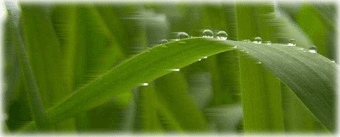Explaining Surface Tension
 The cohesive forces between liquid molecules are responsible for the phenomenon known as surface tension. The molecules of a given surface do not necessarily have affinity with the molecule of a liquid. The electrical bond (Van der Waal Forces) holding a water molecule to another may be stronger than the force between a molecule of water and the molecule of the surface of an object, or another liquid for that matter. When a drop of water is placed on an object surface, it will hold together forming more or less as a round shape until gravity succeeds in flattening it down. In fact, the observation of drop shapes serves as a measurement of surface tension. For this, pre calibrated liquids ranging form 1 to 8 are used. By gently placing a drop of each calibrated solution one can establish the surface tension by a 1 to 8 rating which is equivalent to a value in dynes/cm, the force in dynes required to break a film of length 1 cm. Equivalently, it can be stated as surface energy in ergs per square centimeter. Water at 20°C has a surface tension of 72.8 dynes/cm compared to 22.3 for ethyl alcohol and 465 for mercury
For most fabric, even one made with synthetic yarns, water will rapidly break into the interstices of the woven or knitted matrix. When fabrics are used for outdoor garments this presents some inconvenience even in light rain conditions.
The cohesive forces between liquid molecules are responsible for the phenomenon known as surface tension. The molecules of a given surface do not necessarily have affinity with the molecule of a liquid. The electrical bond (Van der Waal Forces) holding a water molecule to another may be stronger than the force between a molecule of water and the molecule of the surface of an object, or another liquid for that matter. When a drop of water is placed on an object surface, it will hold together forming more or less as a round shape until gravity succeeds in flattening it down. In fact, the observation of drop shapes serves as a measurement of surface tension. For this, pre calibrated liquids ranging form 1 to 8 are used. By gently placing a drop of each calibrated solution one can establish the surface tension by a 1 to 8 rating which is equivalent to a value in dynes/cm, the force in dynes required to break a film of length 1 cm. Equivalently, it can be stated as surface energy in ergs per square centimeter. Water at 20°C has a surface tension of 72.8 dynes/cm compared to 22.3 for ethyl alcohol and 465 for mercury
For most fabric, even one made with synthetic yarns, water will rapidly break into the interstices of the woven or knitted matrix. When fabrics are used for outdoor garments this presents some inconvenience even in light rain conditions.
A common habit for those making material for outdoor garments is to change the surface tension of a fabric to make it repel water, to simulate the behaviour of water on duck features. A fiber that repulses water can stay dry longer, and provide the wearer a sensation of dryness, thus better comfort. The term ‘’water resistant’’ has been adopted to designate the ability of a fabric to shed water. This shall not be mistaken for "waterproof" which necessitates a coating or lamination on the textile. Waterproof describes a fabric that is completely impermeable to the passage of water even when pressure is applied. A water repellent treatment generally is essentially conducted by the impregnation of a fabric in a 90 to 97% water solution with a percentage of an active ingredient such as silicone or fluorocarbone. Polytetrafluoroethylene (Teflon) can also be applied for the same purpose. Wax or grease can also create a decent water repellent result but their effectiveness disappear after the fibers are washed. This treatment can easily turn a surface having a rating of 1 to a rating of 8. The finish product will last up to 100 washes or tight woven substrates, especially with fabrics made of mircofibers.

|



